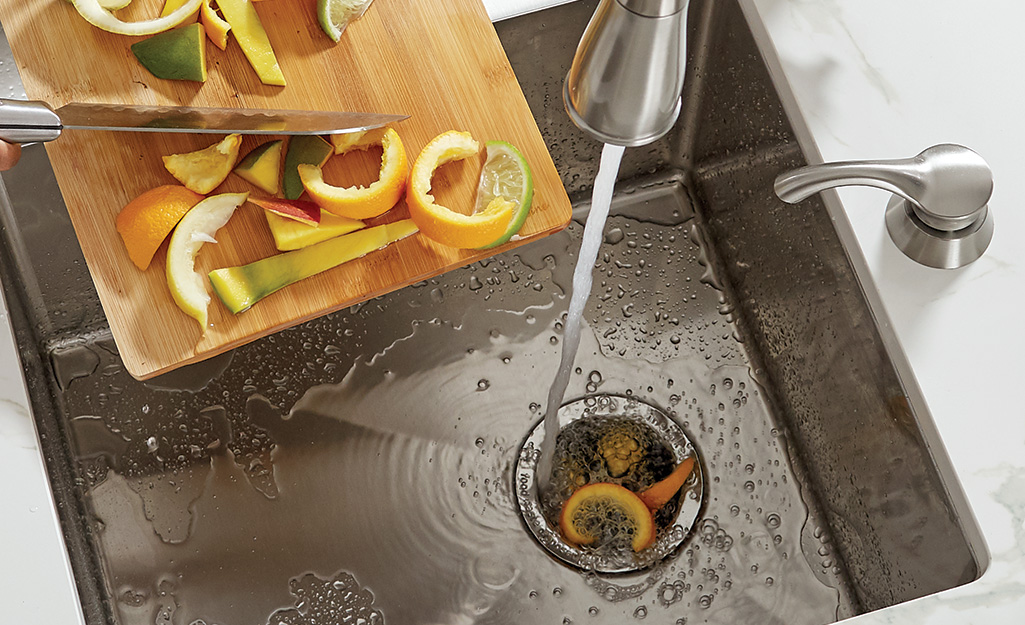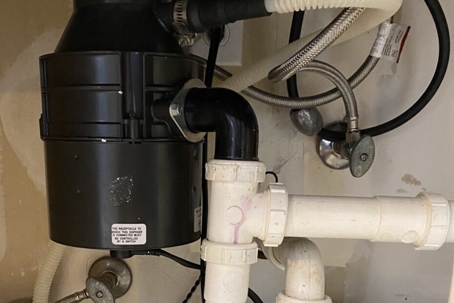Quick Solutions for Fixing a Dripping Waste Disposal Unit
Quick Solutions for Fixing a Dripping Waste Disposal Unit
Blog Article
The content in the next paragraphs relating to Why Is My Garbage Disposal Leaking From the Bottom? is absolutely entertaining. Don't miss out on it.

Waste disposal unit are essential kitchen area devices that help in dealing with food waste effectively. Nonetheless, a leaking waste disposal unit can be an aggravating and untidy issue to take care of. Luckily, numerous leakages can be dealt with quickly with a couple of straightforward steps. In this article, we will certainly talk about exactly how to repair a dripping waste disposal unit successfully.
Intro
Garbage disposals are installed under cooking area sinks and are designed to shred food waste right into smaller sized pieces, enabling it to go through the plumbing system conveniently. While these devices are normally trustworthy, leakages can occur with time due to wear and tear, loosened connections, or damage to the system.
Common Sources Of Leakages in Waste Disposals
Worn Seals and Gaskets
Seals and gaskets play an essential duty in stopping water from leaking out of the waste disposal unit. With time, these elements can weaken, causing leakages around the disposal device.
Loose Connections
The connections in between the waste disposal unit and the pipes system can become loose with time, causing water to leakage out during operation.
Splits or Openings in the Disposal Unit
Physical damages to the waste disposal unit, such as splits or openings in the real estate, can likewise result in leakages.
Recognizing the Resource of the Leak
Prior to attempting to repair a dripping waste disposal unit, it is vital to recognize the source of the leakage. This can normally be done through visual assessment or by carrying out straightforward tests.
Visual Evaluation
Evaluate the waste disposal unit device very carefully for any kind of indications of water leakage. Pay very close attention to locations around seals, gaskets, and link points.
Testing for Leaks
One method to examine for leakages is by running water via the disposal unit and checking for any type of noticeable indicators of leakage.
Tools and Products Needed for Fixing a Leaking Garbage Disposal
Before beginning the repair work procedure, collect the essential devices and products, consisting of a screwdriver, adjustable wrench, plumbing professional's putty, substitute seals or gaskets, and epoxy or patching product for fixing cracks or openings.
Step-by-Step Overview to Repairing a Dripping Garbage Disposal
Turn Off the Power
Before trying any type of fixings, make certain that the power to the waste disposal unit unit is shut off to prevent the threat of electric shock.
Locate the Leakage
Identify the specific area of the leakage and identify the reason.
Tighten up Connections
Use a wrench to tighten any type of loosened connections between the disposal device and the pipes system.
Replace Seals or Gaskets
If the leakage is due to used seals or gaskets, remove the old parts and change them with brand-new ones.
Patching Fractures or Openings
For fractures or holes in the disposal unit, usage epoxy or an appropriate patching product to seal the broken area.
Checking the Garbage Disposal After Repair
Once the repair is full, check the waste disposal unit by running water with it to ensure that the leakage has been resolved.
Preventive Maintenance Tips to Stay Clear Of Future Leaks
To prevent future leaks, it is necessary to carry out normal upkeep on your waste disposal unit. This consists of keeping it tidy, preventing placing non-food products or difficult things down the disposal, and regularly looking for leaks or various other problems.
Verdict
In conclusion, taking care of a dripping garbage disposal is a relatively simple process that can be completed with basic tools and products. By complying with the steps outlined in this article and practicing preventative upkeep, you can maintain your garbage disposal in good working condition and prevent costly repair services in the future.
HERE’S HOW TO FIX YOUR GARBAGE DISPOSAL
WHAT TO DO IF SOMETHING IS STUCK IN YOUR GARBAGE DISPOSAL
If the impeller won’t turn, there’s probably something stuck in the disposal. It could be a steak bone or peach pit, although plumbers report pulling all sorts of inappropriate objects out of disposals, such as bottle caps or aluminum foil. Make sure power to the disposal is off, and look inside to see if you can see the source of the jam.
Never stick your fingers in a disposal. Pull out anything you see with tongs or pliers.
If the disposal still won’t work, it may be time to call a plumber or consider buying a new disposal. GEM Plumbing & Heating is here for all of your garbage disposal needs.
WHAT TO DO IF YOUR GARBAGE DISPOSAL DRAIN IS CLOGGED
Take everything out from underneath your sink and put a bucket or other container under your disposal to catch any water that drains out. Disconnect your disposal from the power supply. If it’s plugged into a wall outlet, unplug it. If it’s hardwired into an electrical box, go to the electrical panel and turn off the breaker for the disposal. Pour ¼ cup of baking soda into the drain, followed by ½ cup of white vinegar. Give the solution a few minutes to fizz and do its work. Look into the disposal with a flashlight to see if you can see an object that might be causing the clog. If you see it, remove it using tongs or pliers. MORE TIPS ON DEALING WITH A CLOGGED GARBAGE DISPOSAL
Never use drain cleaner in a garbage disposal. It can damage the plastic parts inside the disposal. You can also be splashed with the caustic liquid while working to clear the clog. Beware! Never stick your fingers into a garbage disposal. Trust us — not a good idea. In many instances, your dishwasher drains through your garbage disposal. This allows the disposal to grind any large food particles that may be drained out of your dishwasher. There are some jurisdictions, however, where the plumbing code prohibits such a connection. WHAT TO DO WHEN YOUR DISHWASHER DRAINS THROUGH THE DISPOSAL
Run some water in the sink so your plunger has at least a ½-inch of water to create a seal and plunge vigorously up and down several times. You may need to repeat this several times. Run hot water down the drain to clear any residue that remains.

I ran across that piece of writing on Tips on Fixing a Leaking Garbage Disposal when browsing on the internet. Please set aside a second to distribute this article if you appreciated it. Thanks for taking the time to read it.
Estimate Free Report this page